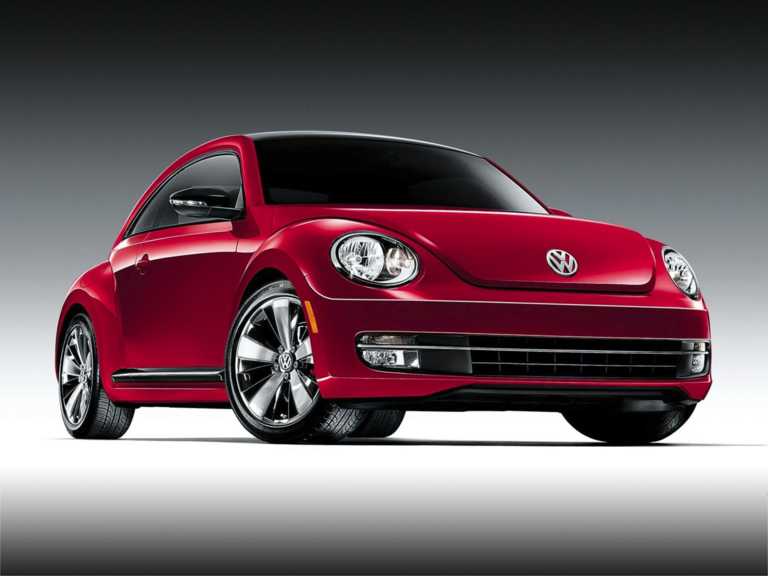The Volkswagen Beetle has been around in various versions beginning in the 1930s and ending in 2019. Throughout that time, it has had several different engines. The 2019 Beetle comes with a 2.0-liter four-cylinder engine. The early Beetles were equipped with a 1.1-liter version of a four-cylinder engine.
What was the engine size in the iconic 1960s Beetle?
At the beginning of the decade, the 1.2-liter engine produced 40 HP. By the end of the decade, a 1.5-liter engine produced 53 HP.
The 1945 Beetle was one of the first civilian cars produced in Wolfsburg, Germany, after World War II. The 1945 model was the first Beetle to be driven by Americans. Its engine was adapted from one that was originally developed for the Schwimmwagen, an off-road vehicle used during World War II.
VW Bug Type 1
Between 1945 and 1950, the Volkswagen engine gained horsepower, going from 24 to 30 HP. The first Beetle, nicknamed the Bug, arrived in the United States in 1950 and had an air-cooled engine in the car’s rear. In 1954, the engine grew to a full 1.2 liters, valve sizes increased, and the compression ratio rose from 5.8-to-1 to 6.6-to-1. Horsepower climbed to 36.
In 1961, total output rose to 40 HP, and the compression ratio was 7 to 1. In 1966, the engine grew again — this time to 1.3 liters, pumping 50 HP. The next year, the engine was 1.5 liters and 53 HP. The next major engine boost was in 1970 when it hit 1.6 liters and 57 HP.
In 1975, manufacturers added electronic fuel injection to the Bug’s engine, but its horsepower fell to 48. The U.S. saw its last Type 1 Beetle sedans in 1977 and its last Type 1 convertibles in 1979. A plant in Puebla, Mexico, continued producing the Type 1 (rear-engine) Bug until July 30, 2003.
The New Bug

The new Beetle began appearing in the United States in 1998. Its transverse engine was mounted in the front of the car and was cooled by water. The gas-powered Beetle engine was a four-cylinder 115-HP, 2.0-liter, single-overhead crankshaft engine with eight valves. The diesel-powered counterpart was a 90-HP, 1.9-liter, turbo four-cylinder engine.
In mid-year 1999, an option was offered for a 150-HP, turbocharged, 1.8-liter, four-cylinder engine.
In 2002, manufacturers introduced a sporty option, called the Turbo S. It had a twin-cam engine or one that has one camshaft for intake valves on one side of the cylinder head and another camshaft for exhaust valves on the other side of the cylinder head. It had an iron block and aluminum cylinder head and made 180 HP at 5,500 rpm and 173 lb.-ft. of torque from 1,950 rpm to 5,000 rpm.
The Turbo S model, however, didn’t last long, dying out in 2004.
The New Beetle Cabriolet appeared in 2003 with a 2.0 liter SOHC engine initially. Later that year, the automaker added a 1.8-liter turbocharged version of the Cabriolet.
By 2006, the new Bug had a 2.5 liter inline, five-cylinder gas engine. By 2007, the automaker had discontinued its 1.9-liter diesel engine. The 2.5-liter inline-five-cylinder gas engine produced 150 horsepower and 170 lb.-ft. of torque. The hatchback worked with a five-speed manual transmission or a six-speed automatic, the convertible with automatic only.
In 2014, manufacturers replaced the 2.5-liter inline five-cylinder engine with a 1.8-liter turbocharged four-cylinder engine. By 2015, the Beetle came with three engine choices: a 150-horsepower, 2.0-liter diesel engine, a 170-horsepower, turbo 1.8-liter gas four-cylinder engine, and a 210-HP turbo 2.0-liter gas four-cylinder. Both automatic and manual transmissions were offered until 2017 when the automaker discontinued manual transmissions.
In 2018, the automaker began equipping the Beetle with a 174-HP turbo 2.0-liter four-cylinder engine that ran more efficiently on a modified version of the thermodynamic cycle patented by Ralph Miller. The 2019 models, the last ones, are equipped with 2.0-liter four-cylinder engines.
People Also Ask These Questions Related to VW Beetle Engines
Why have air-cooled engines lost their popularity?
In cars with air-cooled engines, air circulates directly over heat dissipation fins or hot areas of the engine to keep them at operable temperatures. Turbo-powered engines, however, generate too much heat to be easily controlled by air cooling. Also, air-cooled engines tend to run colder at startup, which means they spew more emissions and run afoul of newer regulations.
How do I choose between buying a 2005 Bug with a 1.8T engine or a 2006 with a 2.5 liter?
This decision depends upon whether you prefer fuel economy (as in the 2.5-liter) or better performance (as in the 1.8T).
How Did the VW Beetle Become an Icon?
One factor influencing its rise as an icon is its numbers: 40 million were produced from 1945 to 2003. Another reason may have been its advertising slogan, “Think Small,” which was popular in the 1960s. Finally, the car was the star of at least five movies, including “The Love Bug,” “Footloose,” “Aisha,” “Herbie Fully Loaded,” and Break Ke Baad.”
